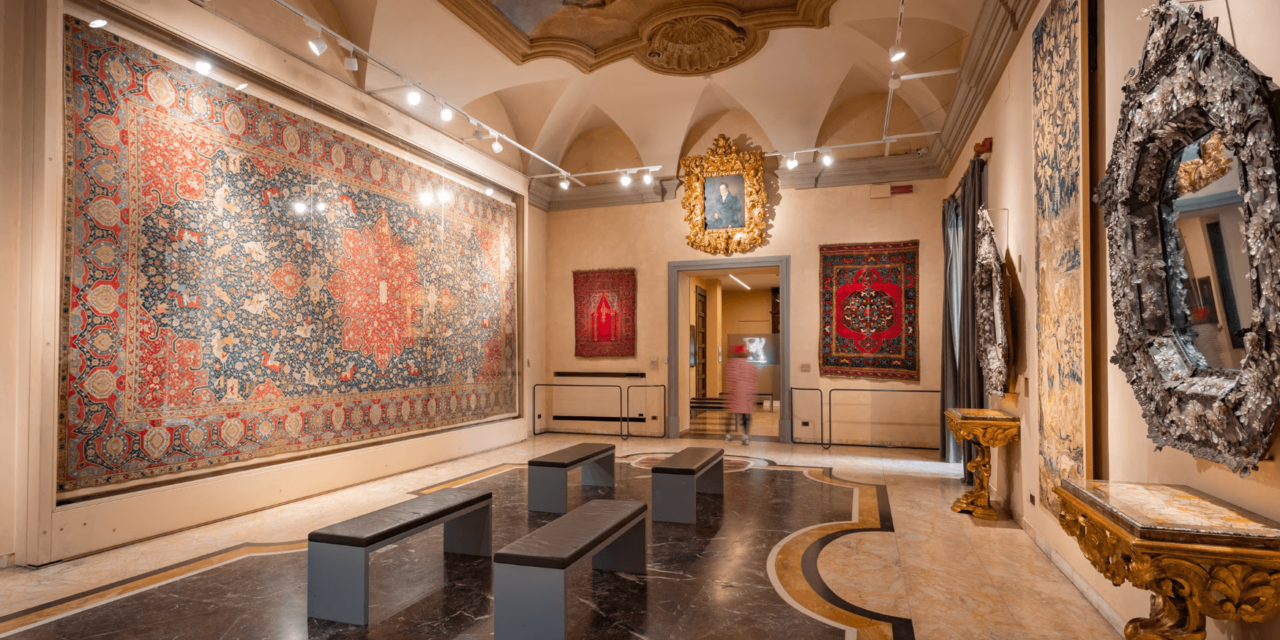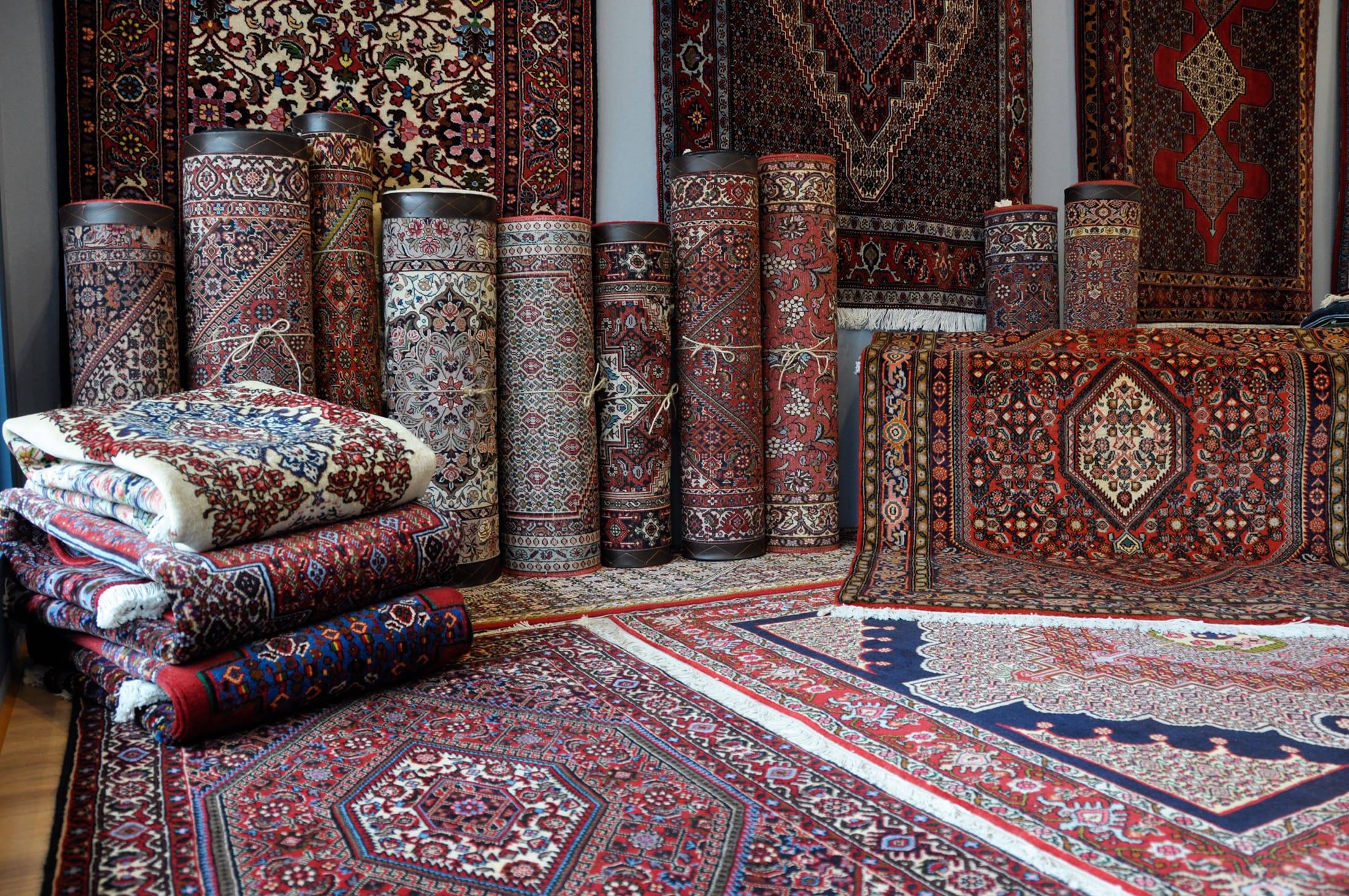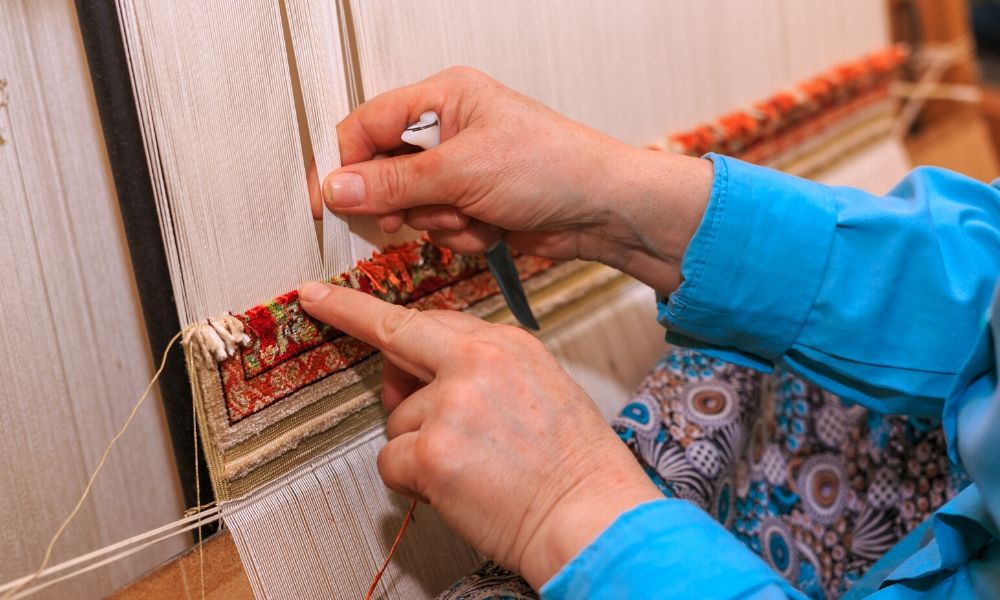Persian Carpets are a type of carpet which are are fully handmade and come from Iran, a country that was officially called Persia until 1934. Even though the name changed, the carpets are still known as Persian because of the strong link between the tradition and the land. Over hundreds of years, Iran became the center of hand-knotted carpet making, not just in the Middle East, but worldwide. This long history can be seen in the deep skill of the weavers and the detailed quality of their carpets.
Not all Persian carpets are fully handmade. In Iran, there is also a large production of machine-made carpets, which are commonly used for affordable and daily purposes. However, Iran remains globally known and respected for its hand-knotted carpets. These handmade rugs stand out because of their long life, strong weaving, and detailed patterns. They are often made with organic and high-quality materials like natural wool and plant-based dyes. This combination of fine weave and natural gives Persian handmade carpets a higher value than most other types.
In many other places, machine-made carpets replaced hand-knotting due to speed and cost. But machines cannot copy the care, time, and depth put into Persian rugs. Weavers spend months or even years on a single piece. The work of persian carpets and rugs often includes stories, patterns from nature, or symbols. At the same time, cheap industrial rugs have taken over large parts of the market, making truly handmade Persian carpets harder to find.
Types
Persian carpets come in many different types, each made in a specific region of Iran. Every type has its own style, knotting method, and color use. These carpets often reflect local history, tribal life, or city traditions. Some are made for daily use, while others are detailed artworks. Below is a list of well-known Persian carpets types, showing the wide variety in patterns, weaving styles, and materials used across the country.
Abadeh
These carpets are strong and known for their hexagon-shaped medallions in the center, often using red and blue tones.
Ardebil
Woven in northern Iran, Perisan Ardebil carpets are durable and affordable, making them suitable for daily home use.
Afshar
Made by nomadic tribes, Persian Afshar rugs often have straight-line patterns and bold geometric shapes.
Bakhtiar
Bakhtiar rugs show garden-inspired layouts, with flowers and tree designs arranged in box-style formats.
Bidjar
Known for their thick, tightly knotted structure, Bidjar rugs are long-lasting and often called “iron carpets.”
Gabbeh
Gabbeh carpets are simple, often with plain colors and minimal patterns, originally made by nomads in Iran.
Ghashghai
These rugs use deep earthy colors and are woven on horizontal looms by the Qashqai nomadic tribes.
Qom
Qom rugs are known for their detailed designs and are often woven with natural silk, showing high-quality craftsmanship.
Hamadan
Perisan Hamadan carpets come in many colors and patterns, reflecting the weaving styles of many nearby villages.
Heriz
These persian rugs feature large, bold central medallions and are often used in traditional home settings.
Isfahan
Iranian Isfahan carpets are finely woven with detailed motifs, often collected for their artistic and cultural value.
Kerman
Famous for their soft color tones and detailed floral designs, Perisan Kerman rugs reflect classic Persian elegance.
Kashan
Kashan rugs carry a long tradition, with balanced patterns and deep colors, often using high-quality wool or silk.
Koliai
Knotted by Kurdish weavers, Persian Koliai carpets are strong and thick, perfect for heavy daily use.
Mashhad
Coming from a spiritual city, Mashhad rugs feature curving floral layouts and deep, rich colors like red and blue.
Moud
Known for their Herati and garden patterns, Moud rugs often show a peaceful and symmetrical look.
Nahavand
Nahavand rugs are bold in red and blue tones, with tribal elements and strong central figures.
Nain
These are some of the finest Persian rugs, often using silk highlights and pale, soft backgrounds.
Senneh
Senneh carpets show geometric designs with a tight weave, made in the Kurdish region of Iran.
Shiraz
Shiraz rugs are made by nomads using freehand designs, often found near ancient ruins like Persepolis.
Tabriz
One of the oldest weaving centers, Tabriz rugs are famous for their variety and fine central medallion designs.
Material
In every Persian rug, there are two main parts that define its structure and value Pile and the Foundation. The pile is the soft surface you see and walk on, while the foundation lies underneath, forming the base where the pile is tightly woven. The foundation includes two parts: the warp (vertical threads) and the weft (horizontal threads).
Both parts of the rug can be made from different materials, and each material affects how the rug looks, feels, and lasts over time. The most common and traditional choice is a wool pile with a cotton foundation, but weavers also use silk, mohair, camel hair, and even goat or cow hair in some rugs. Below, we’ll go over the key materials used in Persian carpets, starting with the foundation.
Foundation material in Persian rugs
Cotton Foundation: Cotton is the most widely used material for the foundation of Persian carpets. It’s strong, doesn’t stretch much, and holds shape well in different weather. This makes it a great base for keeping the rug stable. Cotton warps and wefts give rugs a flat, even look, which is ideal for detailed patterns. You’ll find cotton foundations in many village and workshop-made Persian rugs across Iran it is used in almost 92% of Pakistani carpets.
Wool Foundation: Wool foundations are common in tribal and nomadic rugs. These rugs are often made entirely from wool including the base and the pile. Wool foundations give a softer, more flexible feel underfoot. However, wool is more likely to change shape in humid conditions because it can shrink or expand over time.
Silk Foundations: Silk is rarely used for foundations, but when it is, it’s usually in high-end rugs from cities like Qom and Isfahan. Silk threads are thin and smooth, allowing weavers to tie more knots in smaller spaces. This creates finer patterns that are not possible with thicker materials. Rugs with silk foundations are expensive, delicate, and often considered collector’s items.
Pile material in Persian rugs
Woolen Pile: Wool is by far the most common pile material used in Persian carpets. It is soft, warm, and durable. Good-quality wool also has a natural sheen and holds dye colors well. Most wool piles are made using sheep wool, though the quality can vary depending on several natural factors (explained below).
Wool + Silk (Blended) Pile: In some Persian rugs, weavers combine wool with silk. These rugs are mostly wool, but silk is added to highlight certain motifs like vines, flowers, or borders. The silk gives those parts a slight shine and sharpness. Blended piles offer better visual depth and a finer finish without the full cost of silk. This type of pile is commonly used in high-quality rugs from Nain, Tabriz, Isfahan, and Kashan.
Fully Silk Pile: Rugs made entirely with silk piles are rare and highly valuable. These carpets feel smooth and look shiny. Because silk threads are thinner, weavers can create extremely detailed patterns with very high knot density often over 600 to 1000 knots per square inch (KPSI). Making such a rug takes a long time and great skill. Rugs from Qom are often made with 100% silk and are some of the finest examples of Persian weaving.
Production
The process of making Persian carpets is detailed and fully manual. Each rug begins with raw materials like sheep wool, cotton, or natural silk. These materials are cleaned, spun into threads, and often dyed with plant-based or mineral dyes. Once ready, the threads are fixed onto wooden looms. A weaver then begins the slow task of hand-knotting, one knot at a time. This ancient process, used for centuries in regions like Kashan, Qom, and Isfahan, builds both the design and the strength of the carpet.
Essential Steps:
Selecting raw material (wool or silk)
Spinning and coloring yarn
Preparing the loom with warp threads
Hand-knotting the pile row by row
Trimming and cleaning the rug surface
Final drying and finishing work
Technical Details:
| Step | Task Description | Time Frame | Tools/Materials Used |
|---|---|---|---|
| Yarn Preparation | Spinning and dyeing threads | 1–2 weeks | Wool, silk, natural dyes |
| Loom Setup | Aligning warp and weft | 1–2 days | Wooden loom, cotton |
| Knotting | Tying each knot by hand | Weeks to months | Knife, comb, yarn |
| Shearing | Leveling the pile | 1–2 days | Large scissors |
| Washing | Cleaning to soften and fix colors | 1–3 days | Cold water, flat surface |
| Finishing | Drying, straightening, and checking | 1–2 days | Sun, weights, final comb |
The time taken to complete persian carpets depends on size, pattern, and knot density. Village weavers may take months, while large silk rugs may need over a year. After knotting, the rug is shaved flat, washed, stretched, and dried. Every part of the process is done without machines, making each piece unique. This hand-driven method is why Persian rugs are valued worldwide for quality, durability, and cultural detail.
Valuation
The value of Persian carpets is judged by a mix of practical and cultural factors. The most important are the type of material used, the knot density, the quality of weaving, and the state of preservation. Hand-knotted rugs made with wool or silk usually hold more value than machine-made ones, but condition matters more than age. A rug that is complete, with its edges and design still visible, is often worth more than one that is worn or cut. The design style, region of origin, and how carefully the rug was finished also affect its overall worth.
| Factor | What It Affects | High Value Traits |
|---|---|---|
| Material | Durability, feel | Natural wool, silk |
| Knot Density | Detail, time | High KPSI (300+) |
| Condition | Usability, aging | Clean, no cuts |
| Design | Uniqueness | Detailed, balanced |
| Region | Style, rarity | Isfahan, Qom, Tabriz |
| Dyes | Color life | Natural plant/mineral |
| Age | Collectibility | Old, well-kept |
Summary
Persian carpets are handwoven textiles made across different regions in Iran. Each type shows its own style, shaped by local habits and ways of life. Materials are usually wool, silk, or cotton. Weaving is slow and done by hand, knot by knot. Patterns often repeat, but no two carpets are exactly the same. These rugs are not made for fashion






